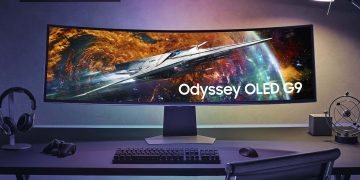Back in the summer of 2023, Lenovo launched its first Legion Go gaming handheld, and it didn’t exactly make a splash in the market. Fast forward to 2025, and Lenovo has come up with three new models. These are powered by either the already established AMD Z1 Extreme processor or the new Z2 chip.
Let’s dive into the first exciting update: the Legion Go S. This gaming gadget gives you the option to choose between running SteamOS or Windows 11. Previously, the Legion Go had detachable controllers, but the new Legion Go S opts for a more straightforward design that weighs just 1.63 pounds. You can get it in two styles: the Windows 11 version flaunts a sleek white finish, whereas the “Nebula Violet” variant offers a more console-style experience with SteamOS. However, going with SteamOS presents a little challenge—it means you’ll be mostly sticking to Valve’s game ecosystem.
Both versions, officially titled the Legion Go S and Legion Go S – Powered by SteamOS, share identical specs. Think of a Z2 or Z1 Extreme processor under the hood, an 8-inch 1920×1200 LCD touchscreen rated at 500 nits with a 120 Hz refresh rate, a 55.5 WHr battery, and up to 32GB of 6400 DDR5 RAM paired with a whopping 1TB of storage. And for those who crave more space, Lenovo’s got you covered with support for standard-sized 2280 M.2 SSDs.
As for connectivity, you get a MicroSD card slot, two USB 4.0 ports up top, and an audio jack. Pricing details from Lenovo reveal that the Windows-powered version will hit shelves in January with a price starting at around $729. On the other hand, the SteamOS variant is set for a May release, starting at $499. Notably, more affordable configurations of the Windows model are expected in May 2025, with prices kicking off at $599. According to Lenovo reps, you can get your hands on either version with an AMD Z2 Go CPU, 16GB RAM, and 1TB storage for $599. The $729 Windows version steps up the RAM to 32GB.
Now, moving onto the more premium offering: Lenovo has teased a prototype of a next-gen Legion Go. This model brings back the detachable controllers, including the unique feature that lets you transform the right stick into a mouse—though ergonomics might not be its strong suit. The controls have been refined with rounded edges and a circular D-pad. Plus, the battery has received a solid boost from 49.2 to 74 WHr.
Sticking with an 8.8-inch OLED display, this prototype boasts a 144 Hz refresh rate. Lenovo made a wise decision to lower the resolution from 2560×1600 to a more practical 1920×1200. It’s also a 500-nit touchscreen with support for variable refresh rates. When it launches in 2025, this second-gen Legion Go will come packed with a Ryzen Z2 processor, up to 2TB of storage, and 32GB of ultra-fast 7500 MHz RAM. The exact details on port availability are still under wraps as of now.












![[Giveaway] Free IREM Collection Volume 3 for PlayStation (NA) [Giveaway] Free IREM Collection Volume 3 for PlayStation (NA)](https://www.gamrbuzz.com/wp-content/uploads/2025/07/Giveaway-Free-IREM-Collection-Volume-3-for-PlayStation-NA-360x180.jpg)

































